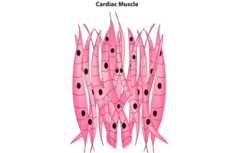Study examines heart cell regeneration in search of new treatments
Sist anmeldt: 14.06.2024

Alt iLive-innhold blir gjennomgått med medisin eller faktisk kontrollert for å sikre så mye faktuell nøyaktighet som mulig.
Vi har strenge retningslinjer for innkjøp og kun kobling til anerkjente medieområder, akademiske forskningsinstitusjoner og, når det er mulig, medisinsk peer-evaluerte studier. Merk at tallene i parenteser ([1], [2], etc.) er klikkbare koblinger til disse studiene.
Hvis du føler at noe av innholdet vårt er unøyaktig, utdatert eller ellers tvilsomt, velg det og trykk Ctrl + Enter.

When a patient experiences heart failure, one of the leading causes of death worldwide, they begin to lose healthy, functioning heart cells. Heart failure causes these once flexible cells to turn into fibrous cells that are no longer able to contract and relax. This hardening of the heart cells impairs their ability to effectively transport blood to the rest of the organs in the human body. Since people cannot regenerate these heart cells, the patient faces a long road to recovery, including preventative or symptomatic treatment.
However, some mammals are able to regenerate heart cells, although this usually occurs over a period of time immediately after birth. Based on this, Mahmoud Salama Ahmed, Ph.D., and an international team of researchers completed a study to identify new therapeutic agents or existing therapeutic regimens previously approved by the U.S. Food and Drug Administration (FDA) for cardiac cell regeneration.
Their study, “Identification of FDA-approved drugs that induce cardiac regeneration in mammals,” was published in Nature Cardiovascular Research.
"This study is aimed at regenerative therapy, not symptomatic treatment," Ahmed added.
Ahmed, a professor of pharmaceutical sciences at the Jerry H. Hodge School of Pharmacy at Texas Tech University, worked on this study at the University of Texas Southwestern Medical Center. He said the current study builds on findings from a 2020 study from the laboratory of Hesham Sadek, MD, at UT Southwestern Medical Center.
In that study, the researchers demonstrated that mice could indeed regenerate heart cells when two transcription factors were genetically deleted: Meis1 and Hoxb13. Armed with this information, Ahmed and his co-authors began their latest study in 2018 at the University of Texas Southwestern Medical Center. They started by targeting transcription factors (Meis1 and Hoxb13) using paromomycin and neomycin, two aminoglycoside antibiotics.
“We have developed inhibitors to turn off internal transcription and restore the regenerative capacity of heart cells,” Ahmed added.
Ahmed said the structures of paromomycin and neomycin indicated their potential to bind to and inhibit the Meis1 transcription factor. To understand how this binding might occur, the team first had to uncover the molecular mechanisms of paromomycin and neomycin and how they bind to the Meis1 and Hoxb13 genes.
“We started testing this in mice suffering from myocardial infarction or ischemia,” Ahmed explained. "We found that both drugs (paromomycin and neomycin) act synergistically to increase the ejection fraction (the percentage of blood leaving the heart with each contraction) so that the contractility of the ventricles (heart chambers) is significantly improved. This increased cardiac output and reduced the fibrous scar that formed in the heart."
The team collaborated with scientists from the University of Alabama at Birmingham to administer paromomycin and neomycin to pigs suffering from myocardial infarction. They found that pigs suffering from myocardial infarction had better contractility, ejection fraction and overall improvement in cardiac output when given paromomycin and neomycin.
In future research, Ahmed is interested in combining the binding profiles of paromomycin and neomycin into one molecule rather than two. If it succeeds, he said the new molecule could avoid any unwanted or potentially unwanted effects associated with antibiotic resistance.
"We want to create new synthesized small molecules that target Meis1 and Hoxb13," Ahmed said. "We want to continue the study in pigs in relation to toxicology studies. In the future, hopefully this will be an introduction to clinical trials in humans.
"The good news is that we use several FDA-approved drugs with established safety profiles and well-known side effects, so we can bypass some of the approval steps for an investigational new drug. That's the beauty of drug repurposing: we can get to the clinic sooner so we can start saving lives."
